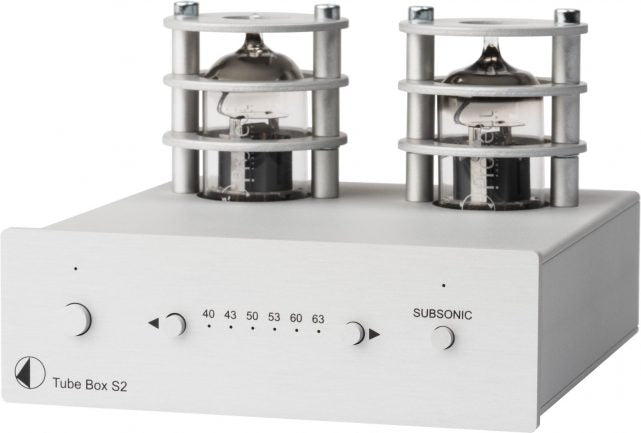Ok sure, but what is it, and what does it do?
At a basic level, a phono pre-amplifier, also called a phono stage (just two titles for the same thing), is a small device to make sure that your record player can connect to a normal sound system. It has two major jobs: it amplifies the tiny signal generated by your stylus, and it re-equalises the signal.

To play records at all, you’re going to need one in your system somewhere. You’ll find a phono pre-amplifier built into some hifi amplifiers, but check before you buy. Not all amps have them ready to go. You can also buy turntables with the phono pre-amp already built in. This is handy if you want to connect to an active set of speakers or any other sound system that doesn’t already have a turntable in mind. For sound quality, though, the best solution is an external phono pre-amp. As a stand-alone device, it has the best shielding from interference and its own power supply, so it doesn’t have to share with an electrically noisy power transformer on a hifi amplifier.
Boost the signal

The signal from the turntable is only generated by the physical movement of the stylus in the groove of a record. Behind the stylus is just a basic electric motor, the same kind you might remember from high school science class. The stylus bobbling around the record’s groove is enough to start a signal going. Those grooves are not very big -- the stylus doesn’t shift even as far as a tenth of a millimetre in the groove when the record is spinning. That means that the electrical current that it creates is also not very big. That current is measured in microvolts.
The phono pre-amp has to take these microvolts and turn them into the 1.5ish volts that your sound system would expect from a DVD player, a streamer, or any other playback device. When we think about the ratio, this can be doing more amplification than the actual amplifier that’s powering your speakers. The quality of your pre-amp can have a huge effect on the end result of your system’s overall sound quality. It often gets overlooked, but it is an amazing way of giving your records a higher level of detail, and a tighter bass.
Dealing with such low level signals means that dealing with interference and electromagnetic noise are huge problems. When you’re boosting microvolts up, all of a sudden the almost undetectable feedback into the power circuit created by your fridge’s compressor in the next room becomes a big deal. When you buy a garbage phono pre-amp for $20 from a sketchy eBay seller, a little fuzz and background noise can easily be picked up and amplified with all the good music you’d rather be listening to.
Rebuild the curve

The other important job of a phono pre-amp is to introduce what’s called RIAA equalisation. The groove on a record isn’t far off from a physical representation of a sound wave itself. Almost. A real representation of a sound wave in vinyl would mean that each track would be 3cm wide and your tonearm would be swinging back and forward like metronome having a seizure.
The RIAA equalisation is done when the record is being mastered and pressed. It is a way of reducing certain parts of the track so that an entire album can actually fit on a record, and so that your turntable doesn’t break after 2 songs. Your phono pre-amp brings that all back and makes your music sound sweet again. It’s not super important to know about the maths involved with the equalisation, in fact it’s actually quite dull, but it’s nice to know that it’s another job quietly managed by your surprisingly important phono pre-amp.

















